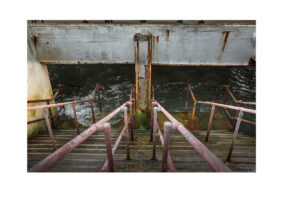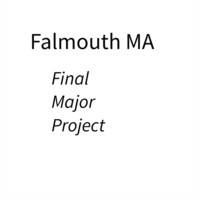Location
Harwich Pier also known as halfpenny pier (Piers.org.uk, 2017)
Intent
Harwich is the shortest of the 4 piers on the list of piers to shoot as part of the project. Similar to the other piers the intent was to record similar elements of the pier but shat show the different in the health of the pier and its overall construction. Harwich pier is the shortest of the 4 piers in the series. It has a local ferry service to Shotley and Felixstowe the runs multiple times a day from April to October taking foot passengers and bicycles.
It addition to recording images of the promenade deck and superstructure I looked for other devices that could be used to signify the passing of time on the pier itself.
Equipment Used
Having already shot Clacton Pier and Southend Pier using a DLSR I decided to continue to use the same combination of camera and lenses to ensure a consistent look and feel to the images across the different piers.
Methodology
The methodology for recording images for the pier was similar to the those adopted on previous piers. For the images of the promenade desk I looked for a vantage point that would encourage the viewer to want to stroll alone the pier. In the case of such a short pier I adopted a low shooting position to extenuate the piers length. The pier is always surrounded by water so it was not possible to access the piers superstructure from the land which was possible at Clacton Pier. Therefore I search for a point of view that would allow the viewer to gaze through the supports of the pier. The third key image for the pier was to record a representative sample of the piers deck which was done by walking along the pier examining the state of the deck.
Having taken a series of images to capture the three view described above looked for details on the fixtures on the pier. I noticed that most of the benches had palak attached recording the passing of someone who had spent time associated with the pier. I spent time capturing images of those different trace elements of people who are no longer here.
Images

After shooting about 60 images of the pier I created a tight edit of 6 images that for me represented the details of the pier from the visit. Overall the images have a very consistent colour palette and though the afternoon sun of October starts to cast shadows across a number of the images that for me add another layer of detail to the texture of the wood of the decking. In the case of the image of the promenade deck my shadow is present and this allows the photographer to enter the image and confirms the vantage point of the photographer (Shore, 2013, p.42) which Shore discussed in his book the Nature of Photography.
Research References
Prior to visiting the pier I used the National Piers Society to get information about the pier. I looked at the work of Simon Roberts and Pierdom to see if Harwich Pier had featured in his work. (Roberts, n.d.)
Assessment of outcome
Overall I considered the shoot a success as the images extend the series created from the earlier shoots bring in further perspectives while providing continuity to the work. The identification of the signifiers of the passing of time and the trace of people who spent a meaningful part of their life connected to the pier was a useful edition to the narrative that is developing from the images captured on successive trips to different piers. I now intent to revisit Clacton and Southend pier to look for similar trace details where a loved one has decided to mark the passing of the person by permanently linking their life to the pier.
References
- Piers.org.uk. (2017). Harwich Ha’penny – National Piers Society. [online] Available at: https://www.piers.org.uk/pier/harwich-hapenny/ [Accessed 31 Oct. 2017].
- Shore, S. (2013). The nature of photographs. London: Phaidon.
- Roberts, S. (n.d.). Pierdom.




Pingback: Harwich – Project